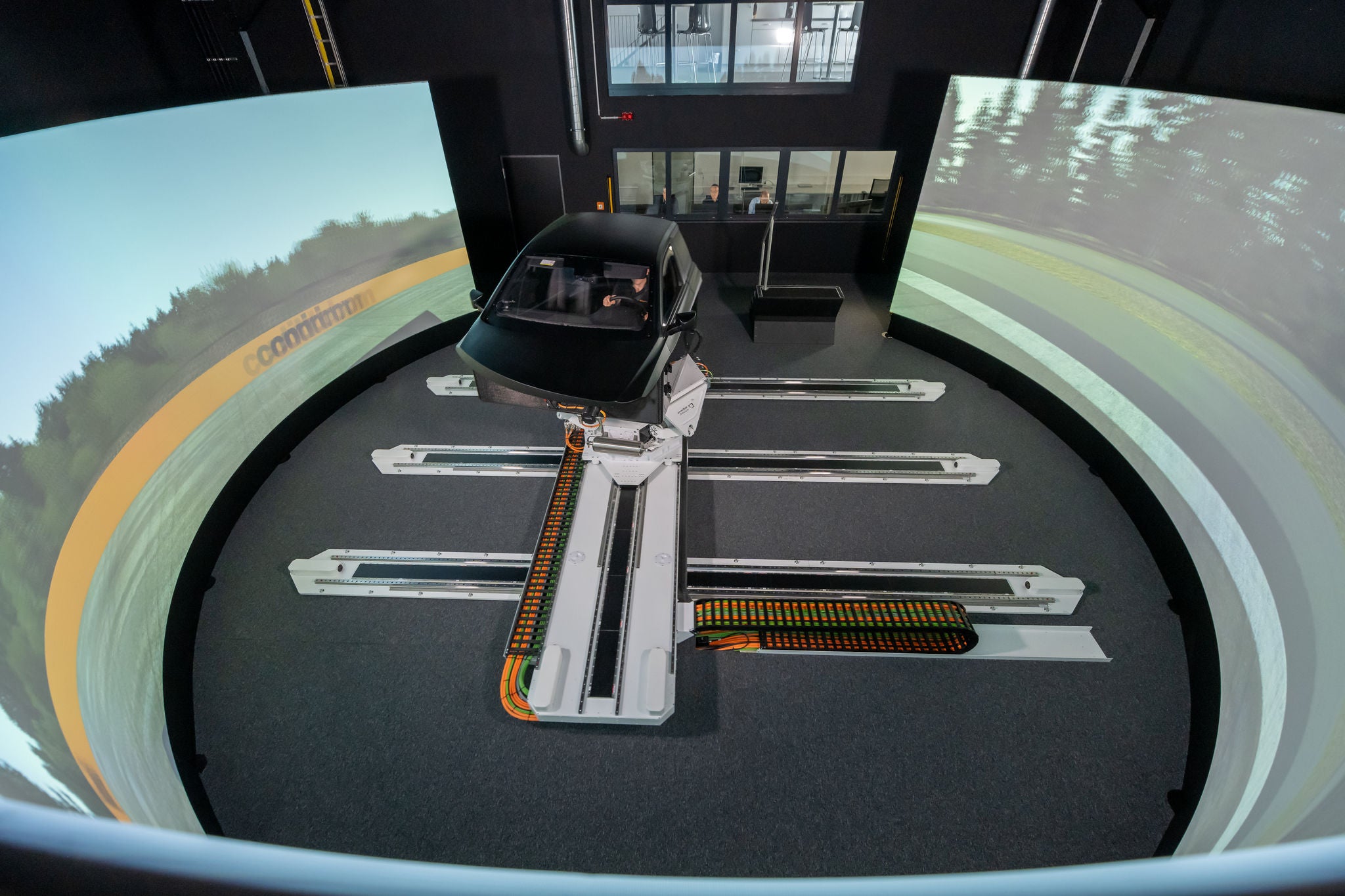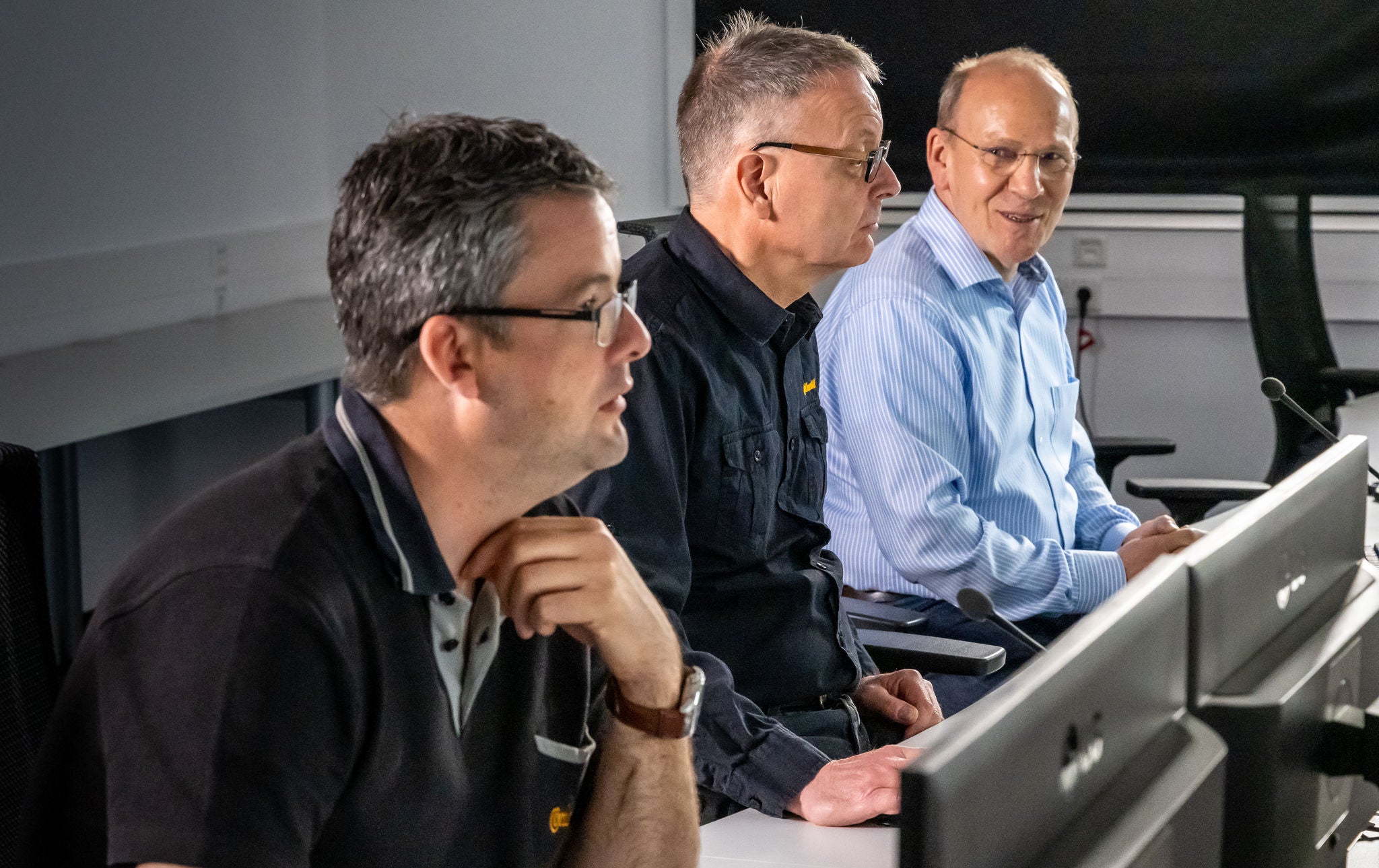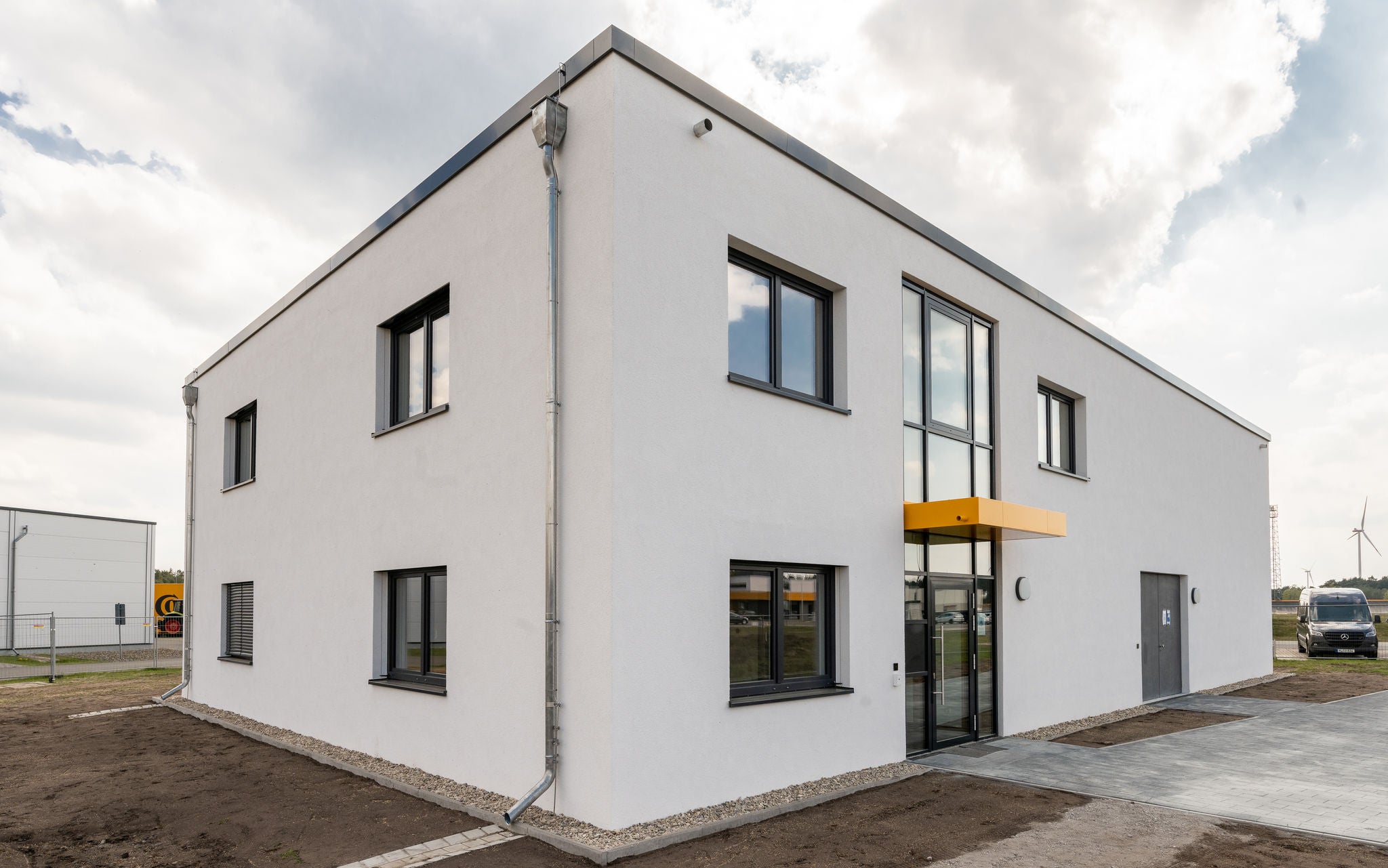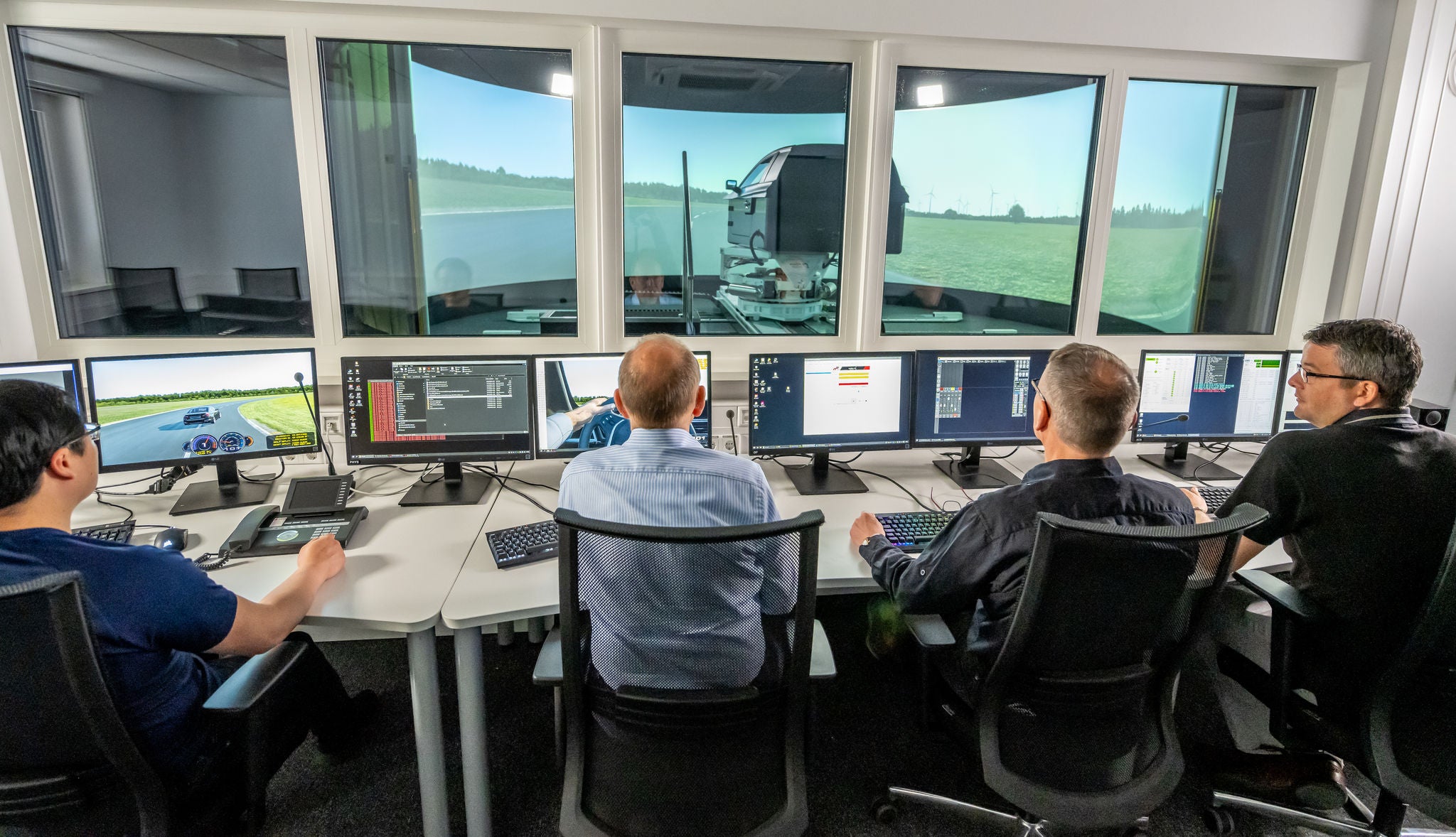Visit Continental Tires in your country for local vehicle fitment
# Technologies&Innovations
Continentals New Driving Simulator
Test tires without building them first

Testing tires without building them? Sounds like a dream of the future? Not at Continental Tires. At its test site Contidrom in Jeversen near Hanover, the premium tire manufacturer has a driving simulator in operation that can do just that.
 Test site Contidrom in Jeversen
Test site Contidrom in Jeversen
One-Year test phase successful
After an intensive test phase of around a year, Continental has now put the so-called driver-in-the-loop simulator into operation. Development times and raw materials in production as well as the associated logistics can be reduced significantly with the help of the simulator.
 The experts Julian Kröber (from left), Kai-Uwe Köhne and Carsten Schröder can view and evaluate driving data in real time.
The experts Julian Kröber (from left), Kai-Uwe Köhne and Carsten Schröder can view and evaluate driving data in real time.
 Powerful servers are required so that the simulator can simulate a test drive.
Powerful servers are required so that the simulator can simulate a test drive.
 From the outside, the building does not reveal what is hidden behind the walls: the high-tech driver-in-the-loop simulator.
From the outside, the building does not reveal what is hidden behind the walls: the high-tech driver-in-the-loop simulator.
Virtual development methods enable us to offer solutions even more efficiently and more precisely tailored to the needs and requirements of our customers. Virtual test kilometers also play a major part in conserving valuable resources.
Bernd Korte, Head of Passenger Tire Development for Continental’s original equipment business
Three advantages in one fell swoop
The driving simulator allows a tire to be tested and optimized before it is even physically built. This has several advantages:
Saves Time
The virtual tests in the simulator can save several months in the development process. This also saves Continental's customers a lot of time.
Tests Materials
New materials that are used in a tire for the first time can be extensively tested in the simulator. In the process, properties and interactions with other materials in the tire are thoroughly investigated.
Saves Ressources
Each test cycle in the driving simulator means fewer physical test patches. In this way, the use of raw materials in the context of production and logistics are minimized. This new test technology also contributes to Continental's extensive sustainability activities.
This is what our driving simulator looks like in action...
... and this is how it works:
The simulator calculates the exact driving dynamics parameters for the tires and the corresponding test vehicle. Continental loads the relevant tire model for the customer’s specific vehicle model into the simulator. The tire model contains precise information on the tire design, tread and rubber compound. The test driver thus drives a dedicated tire model for a specific vehicle model variant, as was previously the case on the physical test track. Tires for all vehicle and drive variants, for passenger cars and commercial vehicles, for electric, hybrid and combustion-engine vehicles can be evaluated in the simulator. The crucial advantage is that the tire parameters can be adjusted digitally at any time. This means that test drives can be repeated at short intervals and subjective impressions can be compared directly with each other.
Thanks to its motion platform that measures four meters in length and five meters in width and features a maximum acceleration of twelve meters per second, the test drivers feel all six degrees of freedom of the vehicle dynamics. Just like in a vehicle on the test track. These include the longitudinal and lateral movements, the stroke movement, the yaw, pitch and roll of a vehicle. Professional test drivers are trained to incorporate these subjective driving impressions into the development process. This experience is essential for achieving the exact tire set-up required by the vehicle manufacturers for the particular vehicle model.
 Continental's engineers can digitally adjust and evaluate tire parameters at any time.
Continental's engineers can digitally adjust and evaluate tire parameters at any time.
Our press release has more information about the simulator

Successful Trial Phase: Continental Tests Tires for Customers in Driving Simulator As From Now On
Tire tests at Continental will now also be conducted virtually, for electric, hybrid and combustion-engine vehicles


